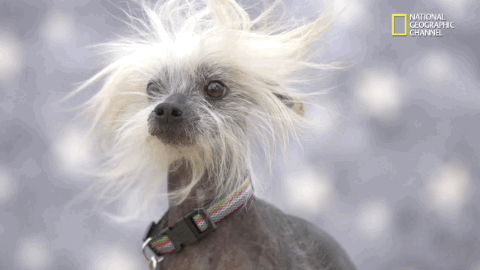
Most breed standards have something to say about teeth, usually in the context of bite or dentition, and in most regards, the Chinese Crested’s AKC breed standard is no different. It does, however, make a distinction between its two coat varieties. What is acceptable in the hairless variety (missing teeth) is considered a fault in the Powderpuff.
Why?
Because the gene that causes hairlessness in the Chinese Crested is dominant to the gene of the coated Powderpuff, and the gene responsible for this hairless trait, FOXI3 (also found also in the Xolo and Peruvian Hairless) activates development of hair and teeth. Put another way, many hairless dogs have missing or abnormally shaped teeth (though not all) but coated dogs in this hairless breed (the one-fourth of hairless dogs that are born with hair) have strong, healthy teeth. At one time it seemed reasonable to think that breeding a Powderpuff to a hairless Chinese Crested would correct or improve dentition, but such wasn’t the case. In many cases, selective breeding seemed to help ameliorate tooth issues.
Missing hair and teeth is a phenotype termed “canine ectodermal dysplasia,” an inherited monogenic autosomal semi-dominant trait. Not always, but often, the canines in some Chinese Crested mouth are conical shaped, and if they’re large, they’ll push the teeth forward. These teeth are referred to as “tusks.” Tusks are a characteristic found in both good and bad “hairless” mouths.
Many of the front teeth in hairless Cresteds are also smaller, and some are basically little “chiclets.” Like the canines, some might point forward, as well.
When evaluating both varieties, importance should be placed on structure, movement, expression and balance. Since the Powderpuff version of the breed doesn’t carry the hairless gene, full and normal dentition is expected while the Hairless isn’t to be faulted for its dentition or missing teeth.
